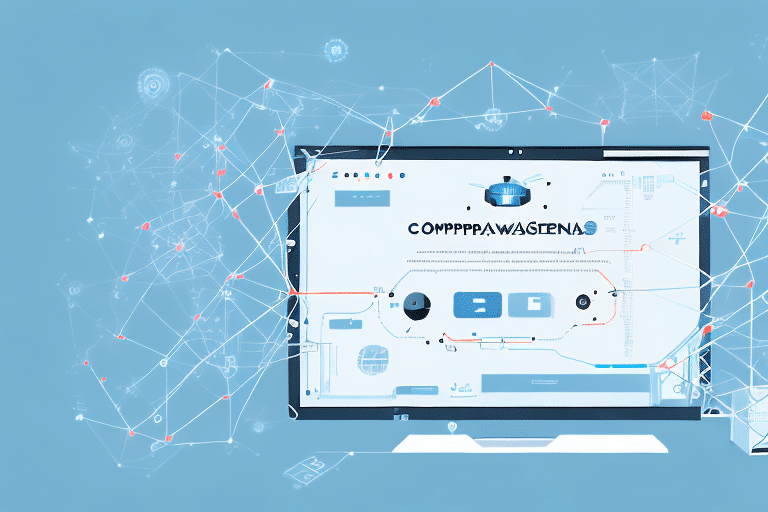Introduction to LSO and Its Benefits in Manhattan Associates WMS
In today's competitive supply chain landscape, optimizing labor productivity is crucial for maintaining efficiency and reducing costs. Labor Standards Optimization (LSO) is a powerful tool designed to measure and manage labor productivity within Warehouse Management Systems (WMS), such as Manhattan Associates WMS.
LSO leverages historical data and industry benchmarks to establish labor standards, enabling businesses to accurately assess worker performance and identify areas for improvement. By integrating LSO with Manhattan Associates WMS, organizations can:
- Enhance Labor Productivity: Monitor and boost worker performance through data-driven insights.
- Reduce Operational Costs: Identify inefficiencies and implement strategies to minimize labor expenses.
- Improve Supply Chain Efficiency: Streamline workflows to accelerate order processing and fulfillment.
- Boost Employee Morale: Set clear performance expectations and provide actionable feedback.
According to a Supply Chain Dive report, companies implementing labor optimization tools have seen an average of 15% increase in productivity and 10% reduction in labor costs within the first year of adoption.
Connecting LSO to Manhattan Associates WMS: A Step-by-Step Guide
Integrating LSO with your Manhattan Associates WMS involves several key steps to ensure seamless operation and data accuracy. Follow this comprehensive guide to establish the connection:
- Verify Compatibility: Confirm that your current version of Manhattan Associates WMS supports LSO integration. Reach out to your software vendor or the LSO provider for compatibility details.
- Install the LSO Module: Access your WMS system and install the LSO module. This process may require technical assistance, so consider involving your IT team.
- Configure LSO Settings: Define your labor standards, workflows, and reporting metrics within the LSO module. Align these configurations with your organizational goals and operational requirements.
- Data Integration: Ensure that LSO can access relevant data from your WMS, such as time and attendance records, task completion rates, and operational logs.
- Team Training: Educate your workforce on using LSO effectively. Conduct training sessions to familiarize them with new workflows and reporting tools.
- Performance Monitoring: Regularly assess LSO’s impact on your operations. Utilize reporting features to monitor productivity metrics and make data-informed adjustments.
- Seek Support: Collaborate with the LSO provider for ongoing support, troubleshooting, and updates to enhance system performance.
For additional guidance, refer to the Manhattan Associates integration guides, which offer detailed instructions and best practices for system integrations.
Optimizing and Managing LSO for Maximum Efficiency
To fully leverage LSO within your Manhattan Associates WMS, implementing optimization strategies and effective management practices is essential. Consider the following approaches:
Regular Data Analysis
Consistently analyze labor productivity data to identify trends and areas requiring improvement. Use LSO’s reporting tools to generate insights that inform decision-making.
Workflow Refinement
Continuously evaluate and streamline your operational workflows. By eliminating redundancies and optimizing task sequences, you can enhance overall efficiency.
Employee Training and Engagement
Invest in ongoing training programs to ensure your team is proficient in using LSO. Engaged and knowledgeable employees are more likely to adopt best practices and contribute to productivity gains.
Performance Metrics Alignment
Align your performance metrics with your business objectives. Ensure that the metrics tracked by LSO reflect key performance indicators (KPIs) that drive your organization’s success.
According to a study by Harvard Business Review, companies that actively manage and optimize labor standards report up to a 20% improvement in supply chain efficiency over those that do not.
Integrating LSO with Third-Party Systems
Enhancing LSO’s capabilities can be achieved by integrating it with other third-party systems within your supply chain ecosystem. This integration facilitates seamless data flow and holistic operational insights:
- Enterprise Resource Planning (ERP) Systems: Link LSO with ERP systems to synchronize labor data with financial and operational planning.
- Transportation Management Systems (TMS): Integrate with TMS to correlate labor productivity with transportation efficiency and carrier performance.
- Warehouse Control Systems (WCS): Connect to WCS to optimize inventory management and real-time order processing.
Successful integration requires:
- Identifying compatible APIs or middleware.
- Collaborating with experienced systems integrators.
- Ensuring data security and integrity during transfers.
Refer to the Supply Chain Digital trends for the latest insights on system integrations and technology advancements.
Customizing LSO to Meet Your Business Needs
LSO’s flexibility allows it to be tailored to your organization's specific requirements. Customization can enhance its effectiveness and ensure it aligns with your operational goals:
Defining Custom Labor Standards
Set labor standards that reflect your unique operational demands. Consider factors such as task complexity, seasonal fluctuations, and employee skill levels.
Custom Reporting Metrics
Create reporting metrics that provide actionable insights relevant to your business strategies. Custom dashboards can highlight performance indicators that are critical to your success.
Workflow Adjustments
Adapt LSO’s workflows to fit your existing processes. Ensure that LSO supports your operational procedures rather than forcing a one-size-fits-all approach.
Mobile Access and Real-Time Updates
Leverage mobile capabilities to allow for real-time data entry and updates. This can increase accuracy and provide immediate visibility into labor performance.
For guidance on customization, explore resources such as the Inbound Logistics software customization guide.
Troubleshooting and Best Practices for Managing LSO
Effective management of LSO requires adherence to best practices and the ability to troubleshoot common issues:
Regular System Reviews
Conduct periodic reviews of your LSO settings and configurations to ensure they remain aligned with your evolving business needs.
Continuous Training Programs
Implement ongoing training initiatives to keep your team updated on new features and best practices associated with LSO.
Data Accuracy and Integrity
Ensure that all data inputs into LSO are accurate and up-to-date. Inaccurate data can lead to misleading insights and suboptimal decision-making.
Monitoring Impact on Operations
Use LSO’s analytics to monitor how labor optimization affects overall operations. Adjust strategies based on data-driven feedback.
Collaborative Problem-Solving
Foster collaboration between your operations, IT, and LSO provider teams to address and resolve issues promptly.
Adhering to these best practices can significantly enhance the effectiveness of LSO within your supply chain. A report by Gartner highlights that best-practice management can lead to up to 25% higher operational efficiency.
Industry Trends and Future Developments of LSO for Manhattan Associates WMS
Staying abreast of industry trends and future developments is essential for maximizing the potential of LSO in Manhattan Associates WMS. Key trends include:
Artificial Intelligence and Machine Learning
AI and ML are increasingly integrated into LSO tools to enhance predictive analytics and optimize labor allocation dynamically.
Integration with IoT Devices
Connecting LSO with Internet of Things (IoT) devices can provide real-time data on equipment usage and worker movements, further refining productivity metrics.
Blockchain for Supply Chain Transparency
Blockchain technology is being explored to increase transparency and security in labor data management, ensuring data integrity across the supply chain.
Sustainability and Eco-Friendly Practices
There is a growing emphasis on sustainable supply chain practices. LSO solutions are evolving to incorporate metrics related to environmental impact, such as energy consumption and waste reduction.
Mobile and Remote Workforce Management
The rise of mobile workforce management tools allows for better tracking and management of remote or on-the-go employees, enhancing flexibility and responsiveness.
Embracing these trends can ensure that your LSO implementation remains future-proof and continues to provide competitive advantages. For more insights, refer to the Supply Chain Digital’s future technology report.
In conclusion, integrating and effectively managing LSO within Manhattan Associates WMS can lead to significant improvements in labor productivity, operational efficiency, and overall supply chain performance. By following best practices, leveraging industry trends, and continuously optimizing your approach, you can maximize the benefits of LSO for your organization.




















